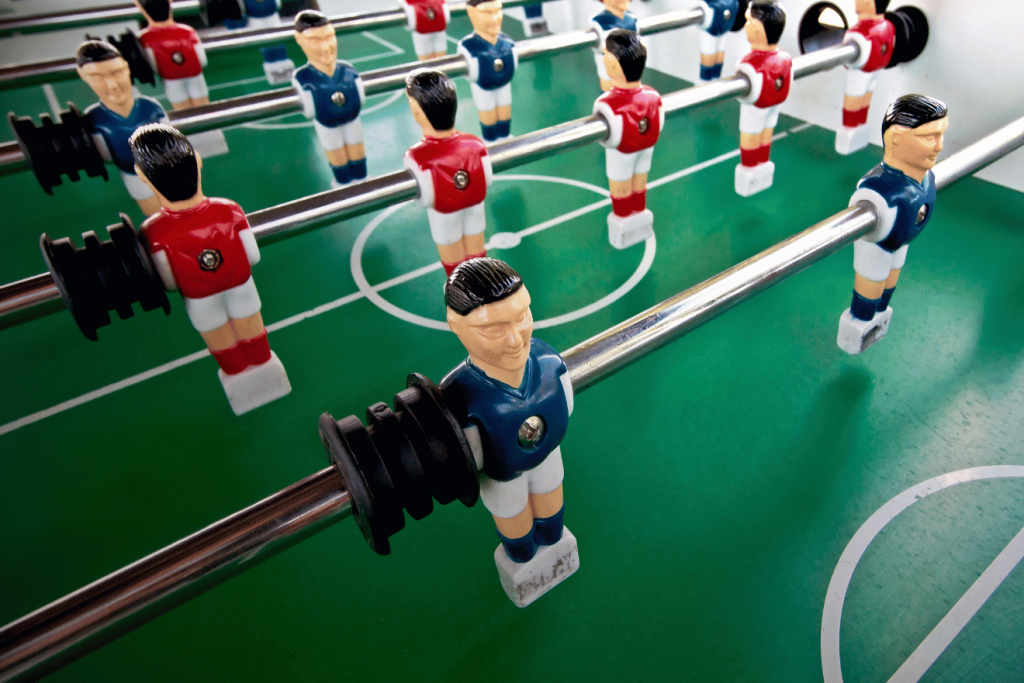Understanding the Importance of Positioning
Foosball is not just about hitting the ball; it’s about hitting it strategically. Positioning plays a vital role in determining your success on the foosball table. Whether you’re playing defensively or aiming for a goal, where you position your players can make or break your game. In this article, we’ll delve into the intricacies of positioning in foosball and explore strategies to help you navigate the table with precision and finesse.
1. The Basics of Positioning
Before diving into advanced strategies, let’s cover the fundamentals of positioning. Each rod on the foosball table serves a specific purpose: defence, midfdefencer offence. Understanding the roles of these rods and how to position your players along them effectively is crucial for optimal gameplay.
2. Defensive Positioning: Protecting Your Goal
The primary objective of defensive positioning is to safeguard your goal. Strategically positioning your defensive players can thwart your opponent’s attempts to score. We’ll discuss the ideal positioning of defenders and goalkeepers to create a solid defensive line and minimize scoring opportunities for the opposing team.
3. Offensive Positioning: Setting Up for Success
On the offensive end, positioning is about creating scoring opportunities while maintaining ball control. We’ll explore how to position your offensive players to set up shots, execute passes, and capitalize on openings in the opponent’s defence. Effective offensive positioning involves anticipation, movement, and coordination among your forward players.
4. Transitioning Between Defense and Offense
Successful foosball players seamlessly transition between defence and offence throughout the game. Understanding when to shift from a defensive stance to an offensive attack—and vice versa—is essential for maintaining momentum and capitalizing on turnovers. We’ll provide tips on recognizing these transitions and adapting your positioning accordingly.
5. Ball Control and Positioning
Central to effective positioning is mastering ball control. Controlling the ball allows you to dictate the flow of the game and dictate play. We’ll discuss techniques for maintaining possession, such as using your player’s body to trap the ball, dribbling, and passing. Proper ball control enables you to position yourself strategically and outmanoeuvre your opponents.
6. Reading Your Opponent’s Positioning
Understanding your opponent’s positioning is just as important as your own. You can adjust your strategy by analyzing how they position their players and anticipating their next moves. We’ll explore techniques for reading your opponent’s positioning cues, such as observing their movements, recognizing patterns, and adapting your gameplay to exploit their weaknesses
7. Adjusting Your Positioning Mid-Game
Flexibility is critical in foosball, and knowing when to adjust your positioning mid-game can turn the tide in your favour. Whether facing a skilled opponent or encountering unexpected challenges, adapting your positioning on the fly is essential for staying competitive. We’ll provide insights into recognizing when adjustments are needed and strategically changing your player positioning.
8. Practice Drills for Positioning Mastery
Like any skill, mastering positioning in foosball requires practice. We’ll outline drills and exercises to improve your positioning skills, such as practising defensive formations, working on offensive setups, and honing your ball control techniques. Consistent practice is the key to refining your positioning instincts and elevating your game to the next level.
Conclusion: Positioning as a Game-Changer
In foosball, positioning isn’t just about where you place your players on the rods—it’s a dynamic strategy that can dictate the game’s outcome. By mastering the art of positioning, you can control the flow of play, create scoring opportunities, and outmanoeuvre your opponents with precision and finesse. Whether defending your goal or launching an offensive attack, strategic positioning is the key to success on the foosball table.



